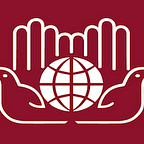Ethics of Humanitarian Innovation
The complexity and interdisciplinary relationships required of humanitarian innovation yield both promise and concern: while the ability to deliver more forward-looking solutions has escalated, the dark side reveals new limitations and ethical dilemmas that undermine humanitarian innovation’s potential.
Consider the following example: within refugee contexts, iris scans, fingerprints, facial recognition, and the use of biometrics have all been determined as beneficial to registration processes. With such technological innovations, registration has become a more efficient (and thus increasingly successful) mechanism. However, such computerized information of refugee families raises the risk of being infiltrated or used by other agencies negligently. When families’ privacy is violated, especially those who are quite vulnerable, one must ask if the so-called technological innovations of registration compromise morality and do more harm than good.
When scrolling through the web, there are a plethora of articles dedicated to the question of ethics as it relates to humanitarian innovation. The United Nations Office for the Coordination of Humanitarian Affairs, in fact, recognizes the most foundational issue of humanitarian innovation: outside actors, many of whom are from the private sector, can be unaware of the “precarious circumstances of the user” within the humanitarian system. In other words, there exist “inherent power asymmetries between those providing protection or aid and those in need of assistance.” The power dynamics between humanitarians and those they seek to help is unique and not often a feature of other private sector domains; bringing in those who are unaware of this can worsen the conflict, thwart local power structures or heighten cultural sensitivities. More than any other field, there needs to be a sensitivity and immense understanding by humanitarians and humanitarian innovators of the needs of the suffering, displaced or harmed. Introducing outside actors ultimately raises the risk of ignorance and ignorance can prove fatal within the humanitarian arena.
The risk described above is heightened by the fact that humanitarian stakeholders and outside actors possess two modes of thinking as it relates to research and consequent development (i.e., innovation). As noted by the United Nations Office for the Coordination of Humanitarian Affairs, humanitarians are often discouraged from pursuing experimentation and untested approaches because the repercussions of failure are severe. While innovation is becoming an increasingly popular trend, potent fears still exist to try out the unknown. This mindset vastly differs from the private sector, particularly technology companies who take a “fail fast” approach to innovation.
There are three levels of ethical consequences that need to be taken into consideration when dealing with humanitarian innovation: individuals, local communities, and the humanitarian system itself. While the individual level calls into question innovation principles of demand-driven and user-centered, open-source and informed consent, community-level dilemmas include not inflicting harm, representative consultation and sustainability, and local ownership. Expectedly, the humanitarian system faces ethical risks if not adhering to humanitarian principles and potentially exacerbating conflict of interest.
There has been some attempt to establish an ethical code of humanitarian innovation. For instance, the UNHCR Innovation Service has advised to include the opinions and analyses of those on the field, thereby reducing the propensity toward top-down management. They also suggest creating an ethical system that is both understandable and accessible to all parties involved, not just humanitarians, inventing ethical principles that can be adaptable to the change that is inherent to innovation and spreading accountabilities to outside partners.
The Refugee Studies Centre’s ‘Principles for Humanitarian Innovation’ working paper, for its part, takes into account the discussions of the 2015 World Humanitarian Summit workshop. It outlines seven fundamental principles of humanitarian innovation: humanitarian purpose; primary relationship; autonomy; lack of maleficence; experimentation; justice; and accountability. With these standards and principles, the humanitarian system must establish an ethical code that is vague enough to be inclusive. It simultaneously needs to be specific and tangible enough to be understood by all actors and easily implemented. Although perhaps difficult, a balancing act between vagueness and specificity is required; a mix between the two will ensure an ethical code that tethers the potential for humanitarian innovation to have a dark side.
Written By Scarlett Aylsworth, Refuge Press Intern, Summer 2019
About the IIHA:
The Institute of International Humanitarian Affairs (IIHA) prepares current and future aid workers with the knowledge and skills needed to respond effectively in times of humanitarian crisis and disaster. Our courses are borne of an interdisciplinary curriculum that combines academic theory with the practical experience of seasoned humanitarian professionals. The IIHA also publishes on a wide range of humanitarian topics and regularly hosts a number of events in the New York area, including the annual Humanitarian Blockchain Summit and Design for Humanity Summit.
For media inquiries, please contact: Camille Giacovas, Communications & Research Officer, IIHA cgiacovas@fordham.edu
